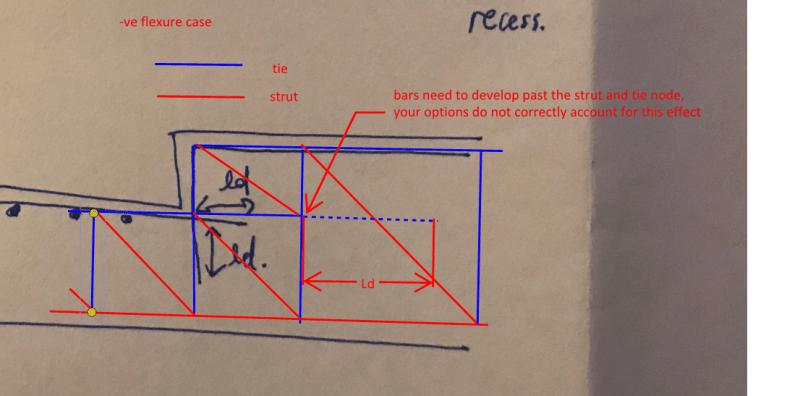said the noob
Structural
For very thick transfer slabs 1500mm and greater, do you guys find it excessive that the developement length of say negative reinforcement over columns (regular supporting columns, not transfer columns) are made excessively long due to the dvCot(theta), for very thick slabs this number is sometimes double or triple the amount of development length of the bar required, is this excessive?
dvCot(theta) will be approximately 1850mm, where as say Ld for a 35M bar would be approximately 1385mm (35mpa concrete, 1.3 factor for horizontal bar in slabs>300dp) this is about 1.33 times that of the development length.
anybody have any thoughts on this?
tia
dvCot(theta) will be approximately 1850mm, where as say Ld for a 35M bar would be approximately 1385mm (35mpa concrete, 1.3 factor for horizontal bar in slabs>300dp) this is about 1.33 times that of the development length.
anybody have any thoughts on this?
tia

